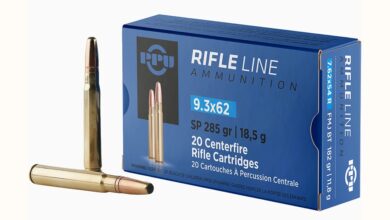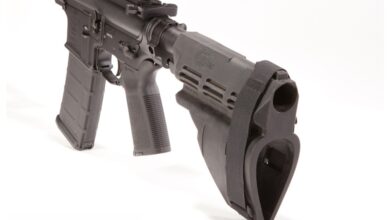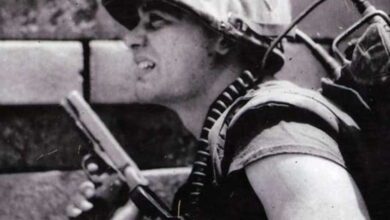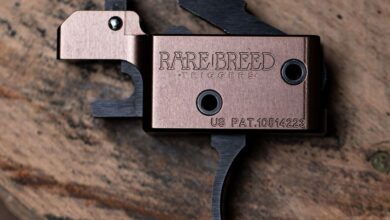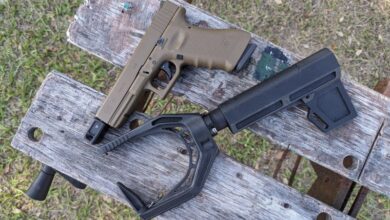Should You Use Detachable Scope Rings?
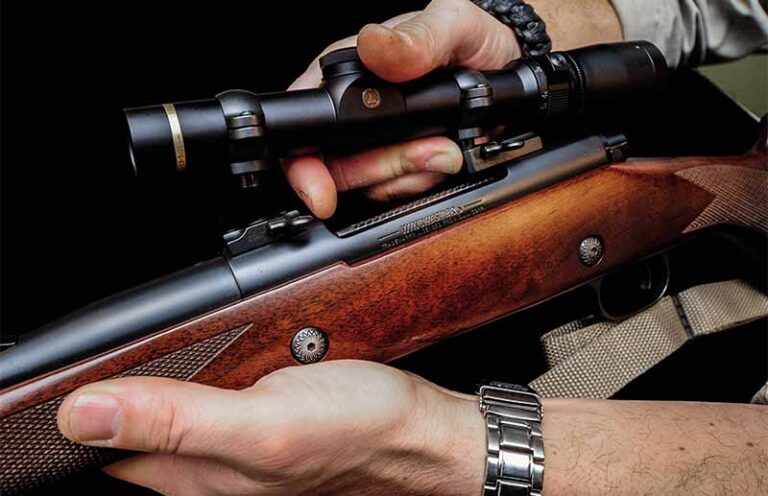
The author discusses the best times to use detachable scope rings, and when to avoid them at all costs.
It was so nearly dark as not to matter, and I was frantically waiting on the green light to shoot the enormous tom leopard feeding on bait just 60 yards away. When Tanya Blake uttered, “Take him,” I wasted no time settling the crosshair just behind the cat’s shoulder and broke the trigger. Blinded by the muzzle flash, I heard the bullet strike flesh, and Tanya told me I’d knocked the cat out of the tree, but he’d recovered and trotted away behind the bait, albeit very slowly.
Elation mixed with doubt combined for one of the strangest feelings I’ve ever experienced. After the celebration of the fact that we had good blood under the tree, and all the team’s hard work had come together for the opportunity alone, we knew we had to go to work. With just a sliver of moon to illuminate our efforts, we had to rely on the flashlights we’d brought in preparation for just such an event.
I pushed a couple of buttons on the Smithson mounts and slid the Leupold off the receiver of the Ramirez Mauser rifle, giving the wide-open view of iron sights in hopes of fending off a charging, wounded leopard.
Luckily, I wouldn’t need them that evening.

After the leopard was recovered, the experience surely had me thinking about the decision to use detachable scope mounts on a hunting rifle. I’d been a proponent of the idea for nearly two decades, but I am also the first to admit that detachable aren’t always the way to go.
Examples Of Detachable Mounts
My first experience with “detachable” mounts was my dad’s .308 Winchester. The rifle—a Mossberg Model 800A—was purchased shortly after my father had returned from boot camp in Fort Leonard Wood, Missouri, as a teenager. Enlisted in the National Guard at the height of the Vietnam War, he was shown the benefits of the .308 Winchester cartridge in the issued M14 rifle, and Dad bought the first decent rifle he could afford.
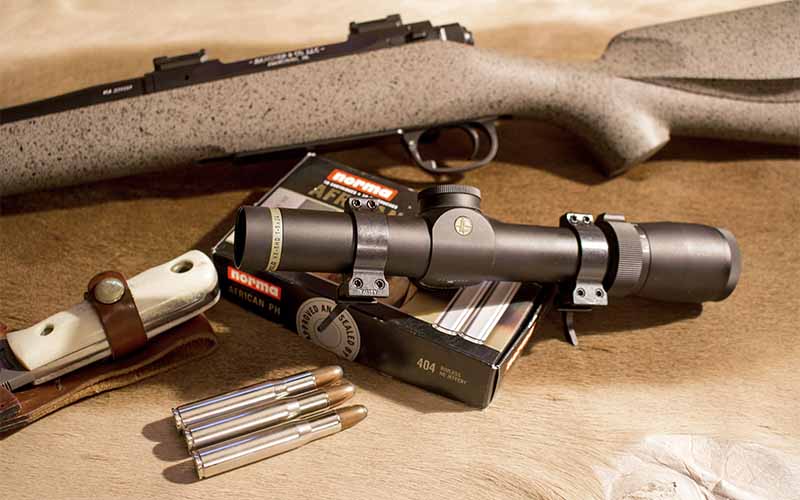
Now, in 1969, riflescopes weren’t anywhere near as reliable as they are today; in fact, they were quite terrible. I’ve had folks tell me the story of how my father nearly ripped the 4x scope off that rifle, reverting back to iron sights because the scope wouldn’t hold zero. He ended up with a Redfield Widefield 3-9x scope, with the TV screen, set in Weaver Pivot mounts, so he could access the iron sights quickly. That rig has held zero for more than a half-century … though I’ve had those same mounts fail on me.
Modern detachable mounts are—quite like the scopes they hold—much better than they were just two or three decades ago. I’ve used all sorts, from the Ramirez proprietary design and Leupold’s Quick Release mounts, to the Griffin & Howe Sporting Top Mount and my personal favorite, Talley Detachable rings, with varying degrees of success and reliability.
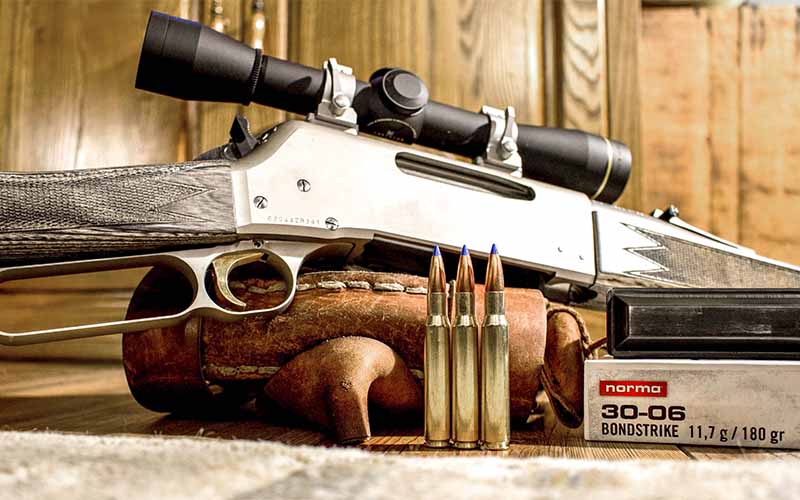
I equipped my Winchester Model 70 Safari rifle in .416 Remington Magnum with a Burris 1.75-5x20mm scope, set in Leupold’s QR mounts. That rig never let me down, and it was the only rifle I brought along on safaris to both Tanzania and Zambia. I took my first Cape buffalo with that rig, as well as varying plains game species. Using a steel post with a small half-moon cut in the shaft, the system features two levers to engage that recess in the shaft to pull the scope downward, locking it into place. Reverse the levers and the scope and rings can be pulled upward, leaving only the shallow bases on the receiver and giving me access to my iron sights.
This is perfect for follow-up of any dangerous game species or to pursue elephant with iron sights, while carrying the petite scope in a pack, should I encounter a kudu or impala on the way back to the truck. On more than one occasion, I’d carry a second, smaller scope—zeroed in a second set of rings—in case something terrible should happen to the primary scope.
Being a skeptic, it took some convincing before I relied on that system. I’d load up a bunch of 400-grain ammo, take a cold-bore shot, remove and reinstall the scope, and then take another cold-bore shot. Despite the heavy recoil, that system never moved more than ½-MOA when tested at my backyard 100-yard range. Simply put, it worked.
I can say the same for the Talley Quick Detachable rings and mounts; they’ve been nothing but utterly reliable. I first used Talley stuff when I took the Heym Express by Martini on back-to-back safaris to South Africa and Zimbabwe; the South African leg would see us hunting plains game, and the Zimbabwean goal was a bull elephant. Covering the bases with just one rifle, I mounted a Swarovski 1-6x24mm in Talley detachables for any of the plains game species, and for the elephant, I’d revert back to the great iron sights on that rifle. With sub-MOA accuracy from the .404 Jeffery, I again repeatedly tested the rig for changes in point of impact, and despite the recoil of a true, big cartridge, the Talley system held things in place.
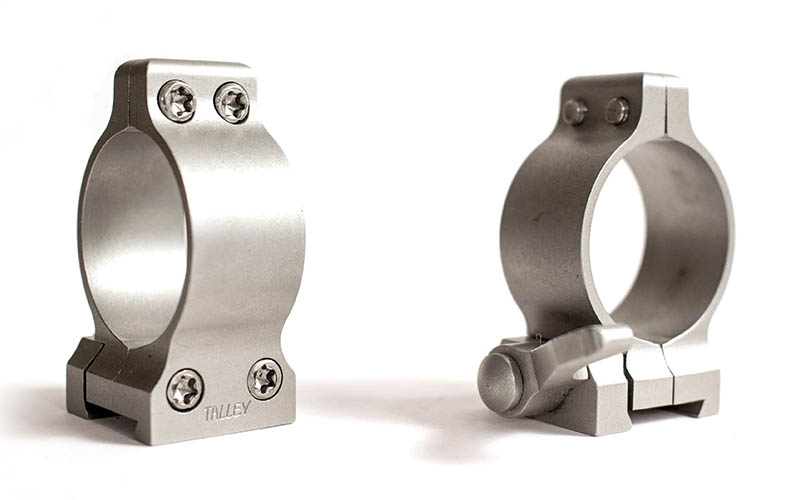
Talley’s Quick Detachable system is similar to their fixed scope ring setup, but with a set of levers operating the screw that clamps the ring to the bases; tighten the levers and the rings are clamped to the dovetail of the bases, while loosening them allows the scope and rings to be removed. I haven’t seen more than a ¾-inch shift of point of impact at 100 yards, irrespective of the cartridge, and I’ve tested this system under recoil with cartridges as fierce as the .505 Gibbs Magnum.
My personal experiences with dad’s Weaver Pivot Mounts have been mixed. While not truly detachable, the Pivot mount swings the scope off the receiver, allowing the shooter to use the iron sights. With lighter-recoiling cartridges, it seems to be OK, as the flat springs that snap the unit into place are apparently capable of holding only so much recoil with repeatable results. I can say from experience that they don’t fare well with the recoil generated by the .375 Holland & Holland Magnum, and either the Talley or Leupold system is a much better choice.
If you wanted to go with a high-end choice, Custom gunmaker Joe Smithson’s mounts are very hard to argue with. They use a pair of spring-loaded crossbolts to hold the rings in the dovetailed—and ball bearing-detented raceways in the receiver. These were supplied on the Todd Ramirez custom rifle I took on safari to Zimbabwe, and though costly, they’re the finest detachable mounts I’ve yet to come across.
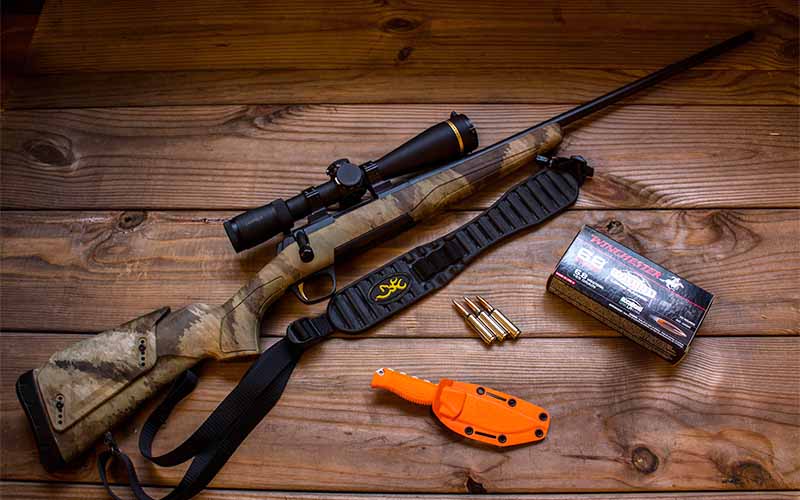
Practical Application
So, when should the detachable mounts get the nod? And, when should the not?
For a dangerous game rifle—one which might be relied upon to follow large, thick-skinned, dangerous game animals armed with horn, tooth, tusk or claw—into dense vegetation, it makes complete sense to have immediate access to the iron sights. Even scopes with 1x magnification or a red-dot sight don’t seem to have the wide-open feel of iron sights, which can be shot with both eyes open. And while I do appreciate fine iron sights, my eyes aren’t getting any younger, and I much prefer the single focal plane of a riflescope, at least for that first shot.
So, with the exception of my double rifle, my dangerous game rifles wear detachable scope mounts. These rifles are—generally speaking—used inside of 200 yards or thereabout, so in a worst-case scenario, where we have a shift of even 1 MOA, we’re talking about a 2-inch difference at 200 yards.
For the hunter who regularly pursues game at longer ranges—say the hunter after Coues deer, any of the sheep species, mountain goats and the like—the potential shift in point of impact could be an issue. For long-range precision shooting, one goal is to make your scope mounts as rock-solid as possible to allow your scope to “go to sleep.” The moving parts involved with any of the detachable mounting systems would probably not appeal to a shooter who has taken the time to assemble a rifle and ammunition capable of hair-splitting accuracy.
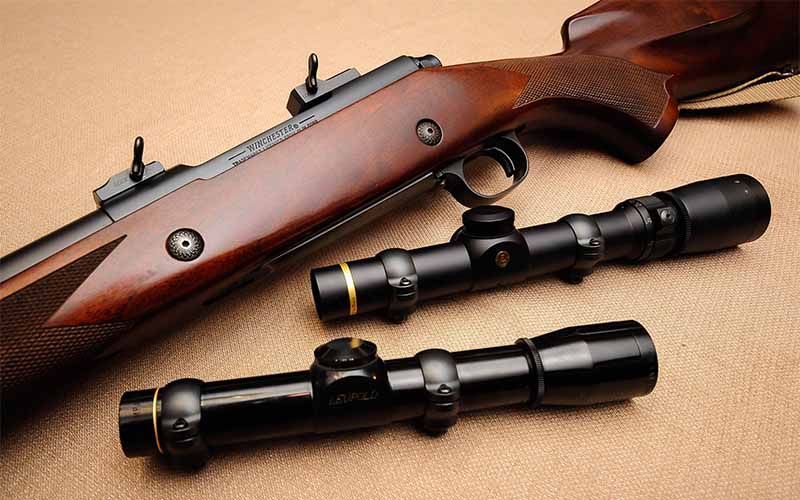
Other than a dangerous game rifle, a hunter who regularly pursues game in remote areas might truly benefit from the advantages of the detachable system. Many modern rifles come with a clean barrel, devoid of iron sights, and should you fall and hit your scope, you’re out of business, left with a fully functional rifle that you cannot aim. Even if you sought out the lightest possible fixed 4x scope and pre-zeroed the unit in a set of rings, you could easily stow it in a pack. The few ounces of additional weight on your back are nothing compared to the long trek back to civilization with a useless rifle and an intact tag.
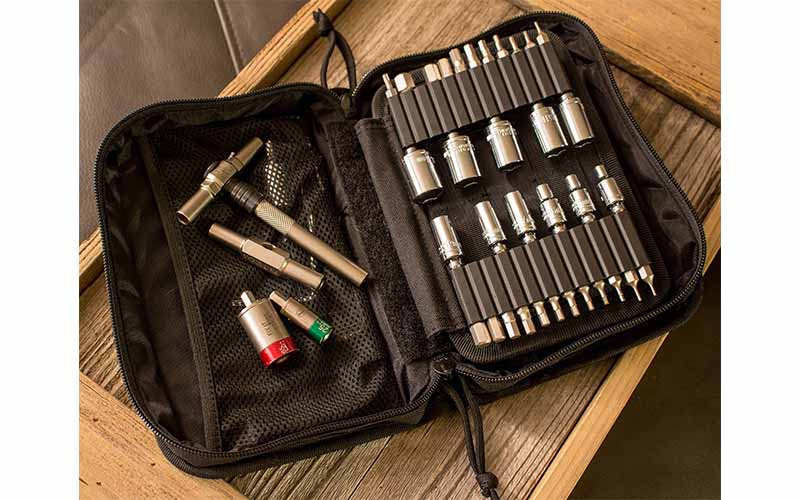
For the AR crowd, who often use the same rifle for hunting and home/personal defense, having a low-powered variable scope in detachable mounts makes complete sense. Many companies offer detachable mounts compatible with a Picatinny rail, allowing immediate changes from hunting rifle to bedroom gun, utilizing the iron sights or changing to a red-dot reflex-type sight. And like any bolt gun, the minute shift in impact—if any—won’t affect a rifle at hunting ranges.
Choosing The Proper Detachable Scope Rings
The choice of detachable mount that works best for you is highly subjective. In terms of functionality, most of the reputable manufacturers offer a dependable product. I like Talley rings and bases, as I’ve had great results with their conventional setups. Warne makes a good set of detachable as well, as does Leupold, Burris and others. Recknagel and Joe Smithson certainly take things up a notch, both in price and engineering, and are usually reserved for the higher-end rifles. NECG (New England Custom Gun Service) offers their Quick-Loc European-style mounts, with spring-loaded dual claws, for the traditional continental detachable mounts; while costly, these are utterly reliable.
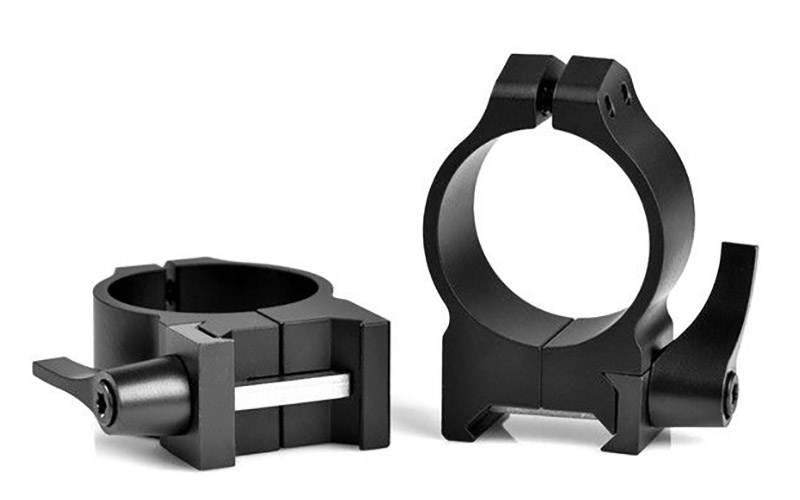
Best of all, the vast majority of these detachable systems can be installed by the user. Like a fixed base/ring system, I strongly suggest reading the manufacturer’s specifications and directions before beginning the install. I also recommend you become very familiar with all the moving parts and put a towel down on the table you’re working on to help catch little parts. I can’t tell you how many times I’ve dropped the little internal springs of the Talley detachables, or the small screws and other parts of various systems—using a light to crawl around on the floor isn’t my favorite pastime.
Good scope rings won’t need to be lapped and will center the optic in a natural fashion; I can’t tell you how much ammunition I’ve saved from using quality mounts. If you’re serious about getting a detachable mount system to give the optimum results, don’t cheap out when buying the base/ring system. It’s one aspect where you’ll get what you pay for.
Editor’s Note: This article originally appeared in the December 2023 issue of Gun Digest the Magazine.
More On Scope Rings And Mounts:

Next Step: Get your FREE Printable Target Pack
Enhance your shooting precision with our 62 MOA Targets, perfect for rifles and handguns. Crafted in collaboration with Storm Tactical for accuracy and versatility.
Subscribe to the Gun Digest email newsletter and get your downloadable target pack sent straight to your inbox. Stay updated with the latest firearms info in the industry.
Read the full article here

